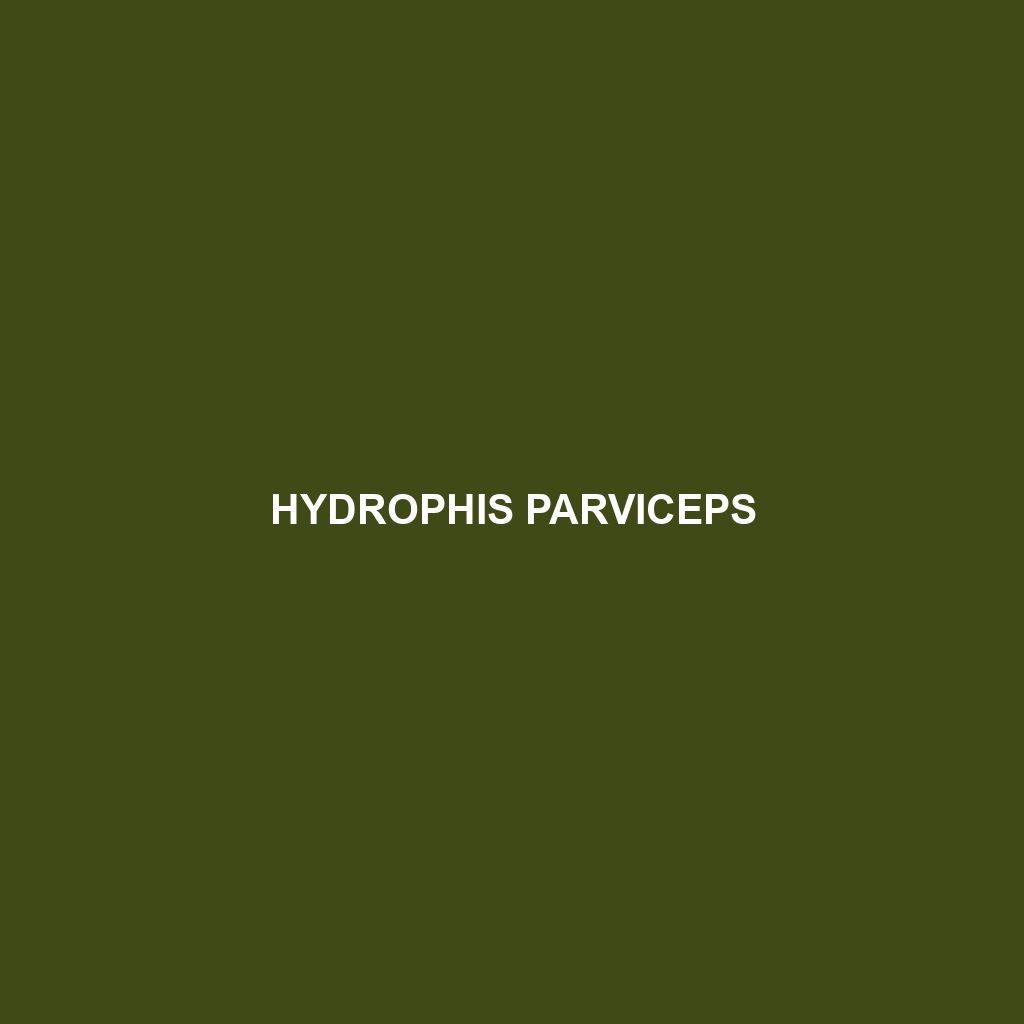Common Name
Hydrophis parviceps
Scientific Name
Hydrophis parviceps
Habitat
Hydrophis parviceps, commonly known as the small-headed sea snake, primarily inhabits the warm coastal waters of the Indo-Pacific region. These marine habitats are characterized by a mix of coral reefs, shallow lagoons, and sandy bottoms. Typically found in waters ranging from the eastern coast of Africa to the central and northern parts of Australia, Hydrophis parviceps thrives in tropical and subtropical climates, where average temperatures remain consistently warm. Often found in areas with abundant marine vegetation, these sea snakes utilize their habitats for both hunting and refuge from predators, demonstrating a strong preference for environments with submerged grasses and reefs.
Physical Characteristics
Hydrophis parviceps is easily recognized by its slender body, which can grow to lengths of about 1.5 to 2.5 meters (5 to 8 feet). Its head is small and distinct, giving it its common name. The coloration is typically dark brown or olive-green, adorned with lighter colored bands or spots, providing excellent camouflage against the sandy ocean floor. The smooth, flattened tail aids significantly in propulsion through water, enhancing its swimming capabilities. Unlike many terrestrial snakes, the small-headed sea snake has adapted to an aquatic life, possessing nostrils located on top of its head to facilitate breathing while mostly submerged.
Behavior
In terms of behavior, Hydrophis parviceps is generally nocturnal, engaging in hunting activities primarily after sunset. This adaptation allows the snake to capitalize on the behaviors of its prey, including fish and eels, which can be less active during the cooler hours of the night. Interestingly, these sea snakes are not solitary; they have been observed in small groups, particularly during mating season. Mating rituals can include elaborate displays whereby males engage in combat to assert dominance over females. This social interaction enhances their reproductive success and allows them to optimize their breeding opportunities within their habitat.
Diet
Reproduction
The reproductive cycle of Hydrophis parviceps is fascinating and reflects its adaptation to an aquatic life. These ovoviviparous snakes give birth to live young, with mating typically occurring in warmer months. Gestation can last around six months, after which females can give birth to litters ranging from approximately 5 to 20 offspring. The newborns are independent from birth and measure about 30 centimeters (12 inches) in length. Maternal care is generally lacking, as parents do not provide protection once the young emerge. This reproductive strategy ensures that the next generation disperses quickly into various marine environments, reducing competition with their siblings.
Conservation Status
The conservation status of Hydrophis parviceps has been classified as of ‘Least Concern’ according to the IUCN Red List. However, they face threats from habitat loss due to coastal development, pollution, and the impacts of climate change, which disrupts their marine ecosystems. Conservation efforts focus on protecting their habitats and raising awareness about the ecological significance of sea snakes. Monitoring populations and enforcing marine protection laws are essential to ensure the survival of this species in the long term.
Interesting Facts
One of the unique facts about Hydrophis parviceps is its remarkable ability to tolerate saltwater, enabling it to thrive in marine environments. Like other sea snakes, it possesses specialized glands that excrete excess salt, allowing it to maintain osmotic balance. Furthermore, this sea snake’s lack of a venomous bite that is dangerous to humans contributes to its relatively confident presence in diverse regions. It is an excellent swimmer, capable of covering substantial distances in search of food, making it a proficient predator of the ocean.
Role in Ecosystem
Hydrophis parviceps plays a vital role within its ecosystem as both a predator and prey. By feeding on smaller fish and eels, it helps regulate their populations, thus maintaining the balance within marine communities. Additionally, it serves as a food source for larger marine predators, contributing to the dietary needs of species further up the food chain. This ecological interdependence illustrates the importance of Hydrophis parviceps in sustaining the health of marine ecosystems, highlighting its role as a keystone species in the coastal environments where it resides.
